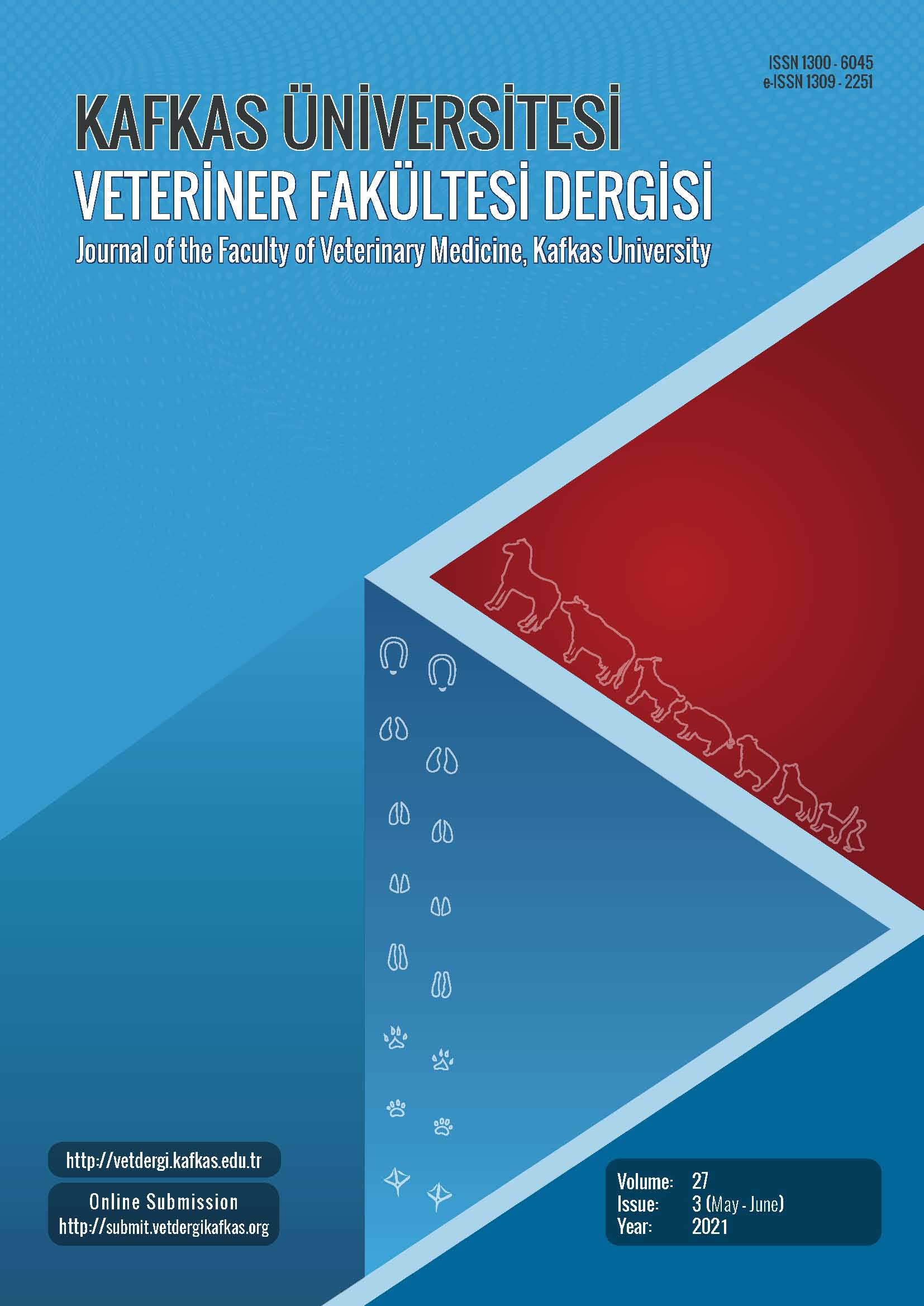
This journal is licensed under a Creative Commons Attribution-NonCommercial 4.0 International License
Kafkas Üniversitesi Veteriner Fakültesi Dergisi
2021 , Vol 27 , Issue 3
The Effects of the Basil (Ocimum sanctum) Treatment on the Tumor Necrosis Factor-α and Interleukin 1β Release in the Kidney Tissue of the Diabetic Rats
1Department of Midwifery, Faculty of Health Sciences, Kafkas University, TR-36100 Kars - TURKEY2Department of Histology and Embryology, Faculty of Veterinary Medicine, Namik Kemal University, TR-59030 Tekirdag, - TURKEY
3Department of Histology and Embryology, Faculty of Medicine, Uşak University, Uşak - TURKEY
4Department of Histology and Embryology, Faculty of Veterinary Medicine, Kafkas University, TR-36040 Kars - TURKEY DOI : 10.9775/kvfd.2021.25359 This study aims to examine the changes of the Ocimum sanctum treatment on the tumor necrosis factor alpha (TNF-α) and interleukin 1β (IL-1β) in the kidney tissue of the rats, in which the experimental diabetes was induced with streptozotocin (STZ). Forty Sprague Dawley male rats were divided into 5 groups: Diabetes, Diabetes + Ocimum sanctum, Ocimum sanctum, Control, and Sham. The immunohistochemical localization of TNF-α and IL- 1β in the kidney tissue was determined by using the streptavidin-biotin-peroxidase method. Strong TNF-α immunoreactivity was determined in the renal cortex of the rats in the Diabetes and Diabetes + Ocimum sanctum groups on 14th days, low immunoreactivity was determined in the rats in Ocimum sanctum, Sham, and Control groups. Strong TNF-α immunoreactivity was determined on day 14 in the kidney cortex of rats in the Diabetes and Diabetes + Ocimum sanctum groups. While strong IL-1β immunoreactivity was observed in the renal cortex of the Diabetes group, moderate IL-1β immunoreactivity was observed in the renal cortex of the Diabetes + Ocimum sanctum and low immunoreactivity was determined in the Ocimum sanctum, Sham, and Control groups. In this study, it was assessed how the polymorphisms, occurring in the cytokine genes of Ocimum sanctum in the rats, in which experimental diabetes was induced, and TNF-α and IL-1β, which was demonstrated to have an important role in the complication development in the diabetic patients aff ected the renal tissue. Keywords : Diabetes, Ocimum sanctum, Tumor Necrosis Factor Alpha, Interleukin, Kidney










